Here’s another informal test of the Nikon 500mm f/5.6 phase Fresnel lens. This time I compared it to the excellent Nikon 180-400mm f/4 zoom. There are two problems with this test, but I’m publishing it anyway.
Here’s the scene with both lenses, with the zoom set to 500mm by switching in the built in teleconverter and setting the lens to 360 mm.. The target is 63 meters away:
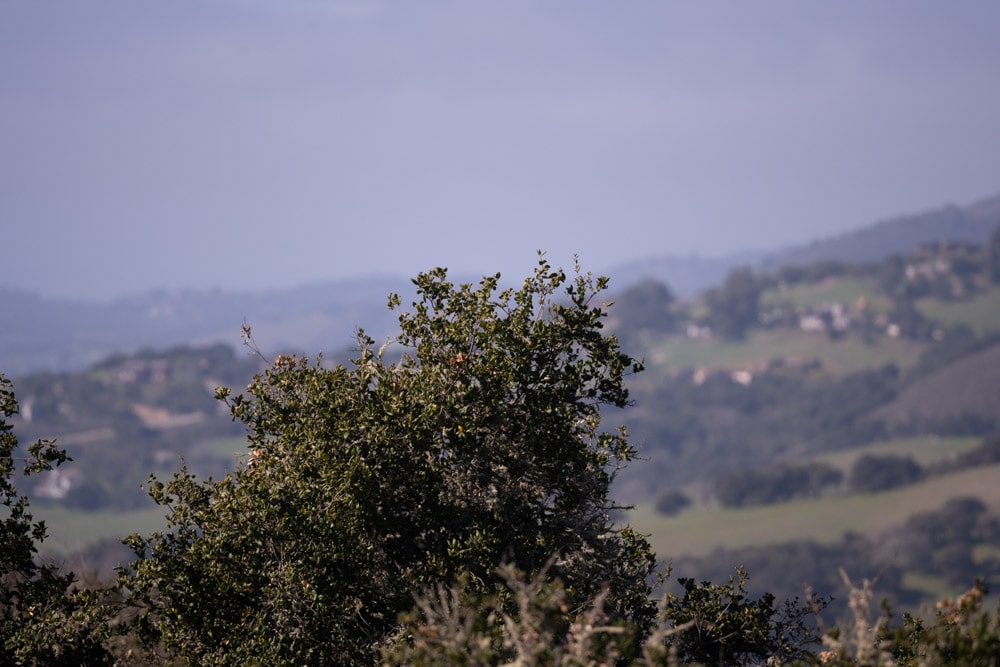
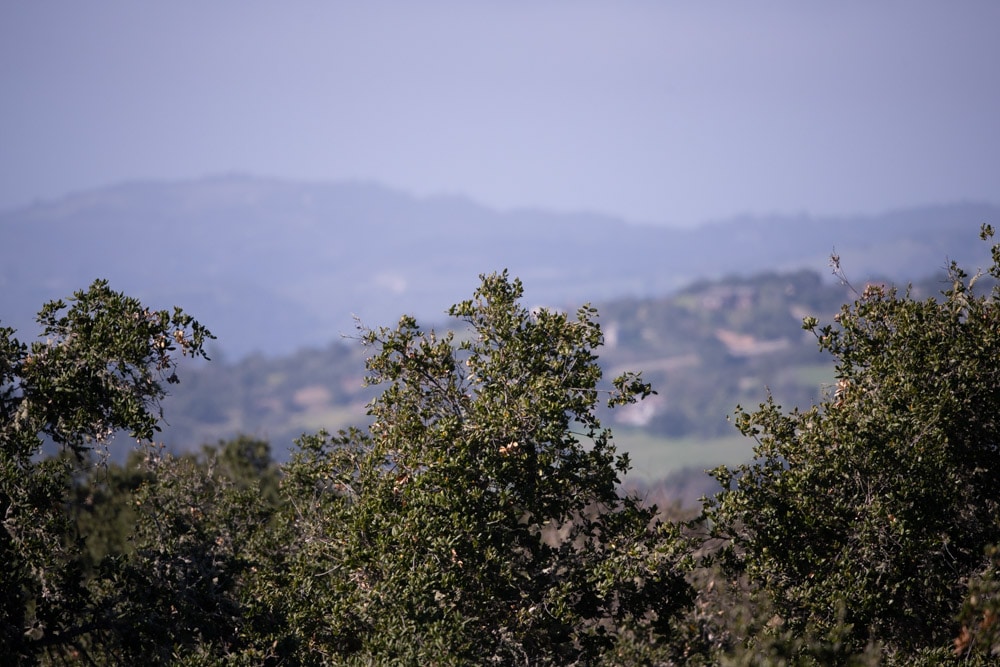
You can see the first problem. I lined up the shots on different trees.
The zoom seems to have slightly more illumination falloff.
Making three shots for each variation and picking the sharpest, I exposed at ISO 800. I used AF-S and the pinpoint spot.
Capture conditions were:
- Heaviest RRS legs
- ISO 800, to keep all the shutter speeds at 1/1000 or higher
- Arca Swiss C1
- 5 second self-timer
- Electronic shutter
Images developed in Lightroom, with default settings except:
- WB set to daylight
- Exposure to equalize brightness
- Adobe Color Profile
- Sharpening 20, radius 1, detail 0
- Chromatic aberration correction turned off
- Pick the best of three images at each test condition
I did not try to defeat Lightroom’s silent distortion correction.
We’ll look at some tight crops.
If you’ve seen these here before, just jump to the images. If not, I need to spend some time telling you how to interpret them. They’re at roughly 250% magnification, enlarged to 700 pixels high on export from Lightroom. If you just want a rough idea of the differences, just look at the images as displayed in-line in the posts. However, if you wish to compare these images in detail, you should view these images by clicking on them to see the source files, then set your browser for 100% zooming. Even better, download them and make Photoshop stacks.
No matter what you do, these crops are all going to look horrible. I’m blowing them up so much so that they will represent the original file after JPEG’s discrete cosine transform has had its way with them. If you want to get a good idea of what the images would look like printed, get far away from your monitor. No, farther than that. Put a bunch of the images up on the screen and back up until the best one starts to look good. Then look at the others. There’s another reason why these images won’t look like the best thing the camera/lens combination can deliver. They’re demosaiced with Lightroom. Lightroom is not awful, but for a particular image, there are usually better raw processors. I use Lr because it’s a de facto standard, because I know it well, and because it’s got good tools for dealing with groups of images.
Here’s how to use these highly-magnified crops. The dimensions of the Z7 sensor is 9504×6336 pixels. If we make a full-frame print from the Z7 on a printer with 360 pixels per inch native driver-level resolution, like the Epson inkjet printers, we’ll end up with a 26.4×17.6 inch print. The 289×224 pixel crop you’re looking at will end up 0.8×0.68 inches. Let’s imagine that you or your viewers are critical, and will look at the 27×18 inch print from about 18 inches (conventional wisdom is that the distance would be a little greater than that, or 28 inches (the diagonal), but you did buy a high-resolution camera for a reason, didn’t you?).
The next step is dependent on your monitor pitch, which you may or may not know. Turns out, you don’t have to know it. Just take the 250% crops and view then at 1:1. How high are they? Get out your ruler and measure, or just guess. Let’s say they are 6 inches high. 6 inches is about 7 times 0.8, so in order to view the crops the way they’d look from 18 inches on the print is to view them from 7 times as far away, or 10.5 feet.
Everything here scales proportionately. If the image on your screen is bigger than 6 inches, increase your viewing distance by the ratio of your image height to 6 inches. If you think your viewers are going to almost get their nose to that print and look at it from six inches, divide that 10.5 feet by 3, and look at the image on the monitor from three and a half feet away.
In the center:

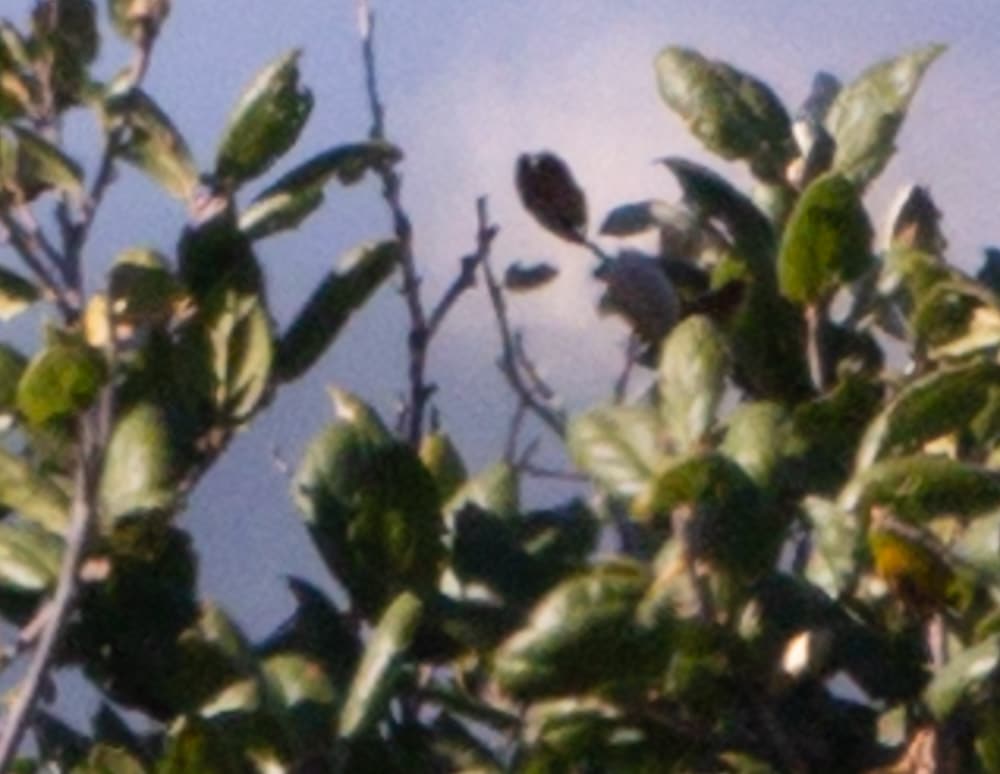
Now you can see the second problem: the chosen target doesn’t have a lot of high-spatial-frequency information. I’m going to have to get further away. Unfortunately, that limits the times of day that I can test without worrying about atmospheric thermal blurring to an hour in the morning. The lenses appear to have about the same sharpness. It will take more testing to tell if that’s really true.

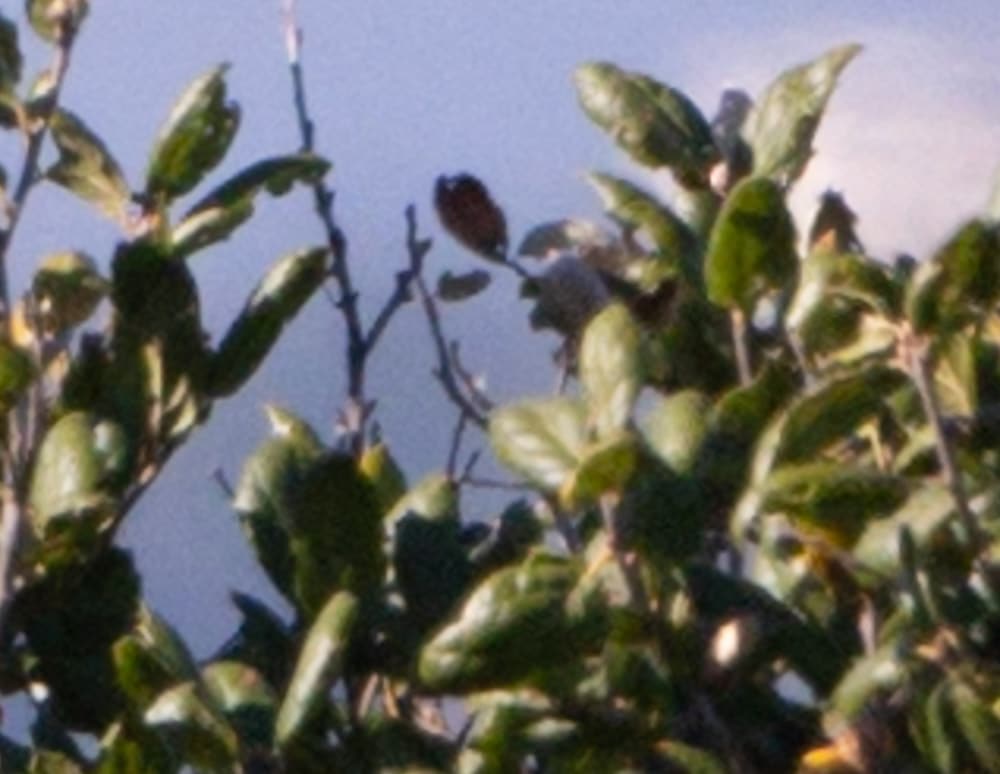
Not much difference.

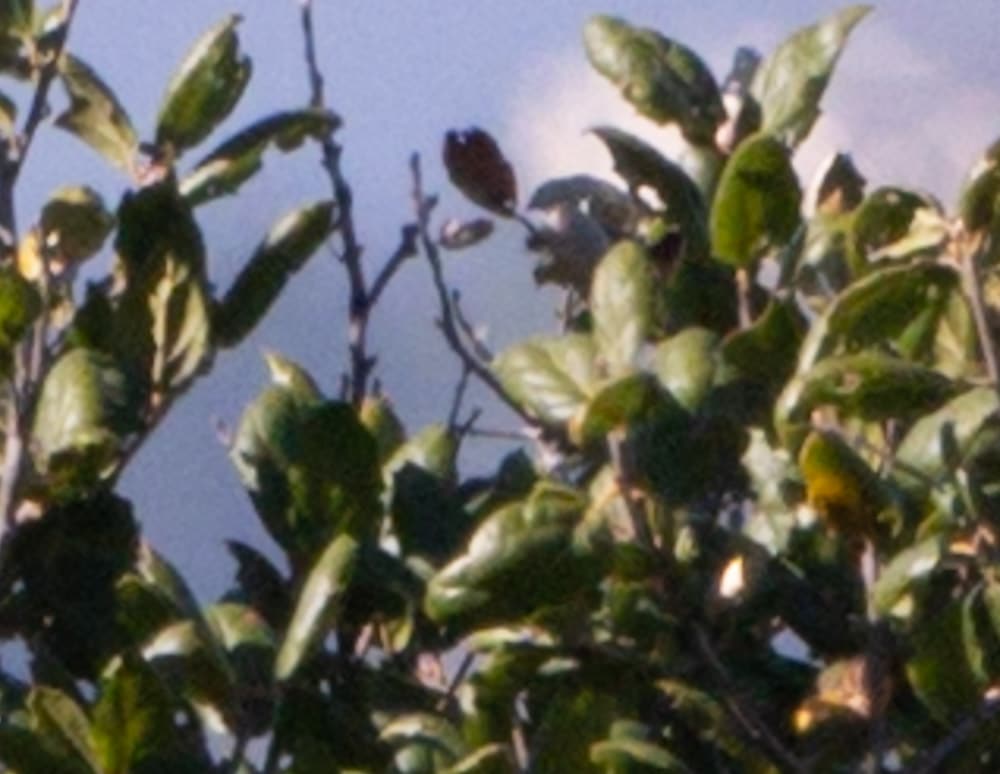
In the upper right corner:
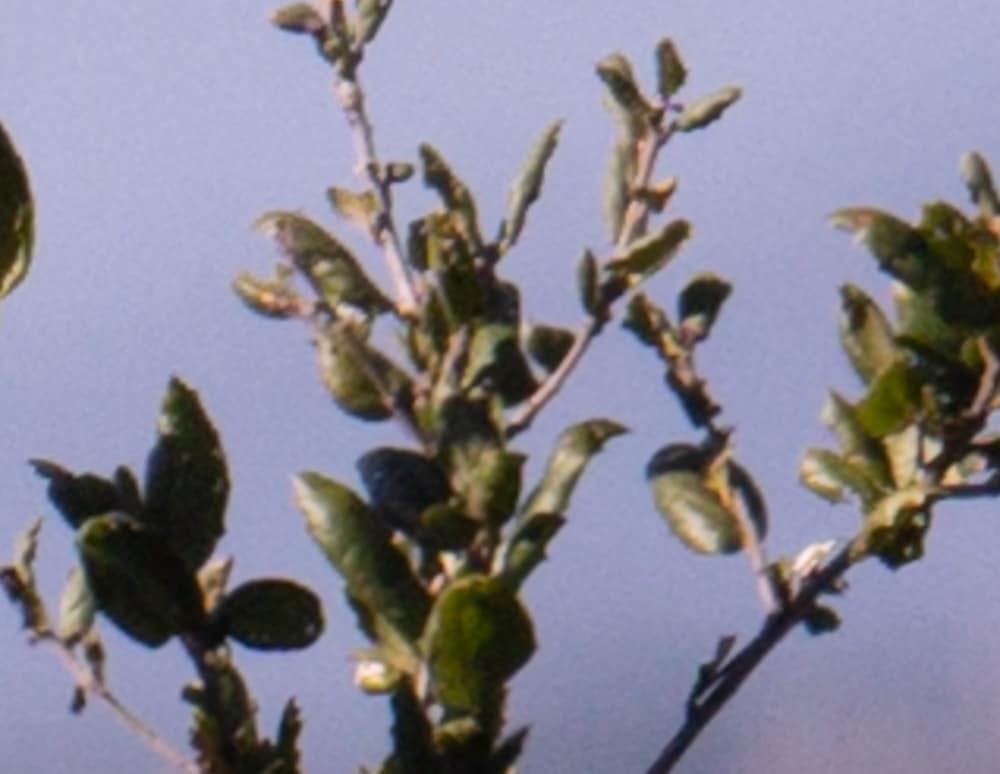
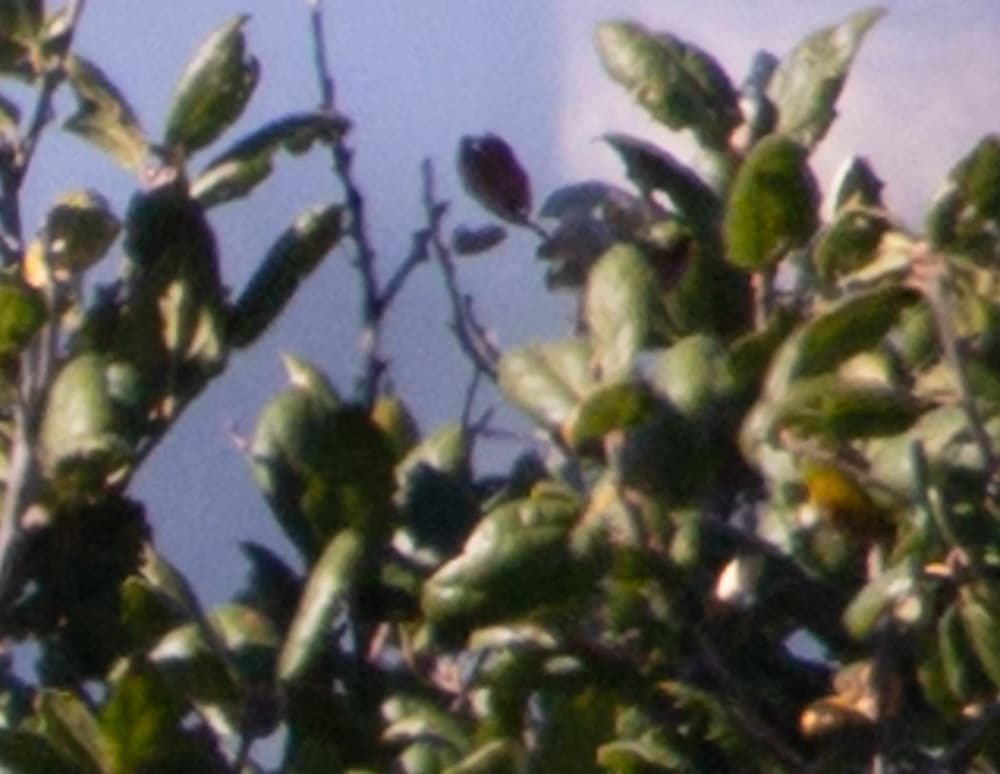
We haven’t lost much in either case.

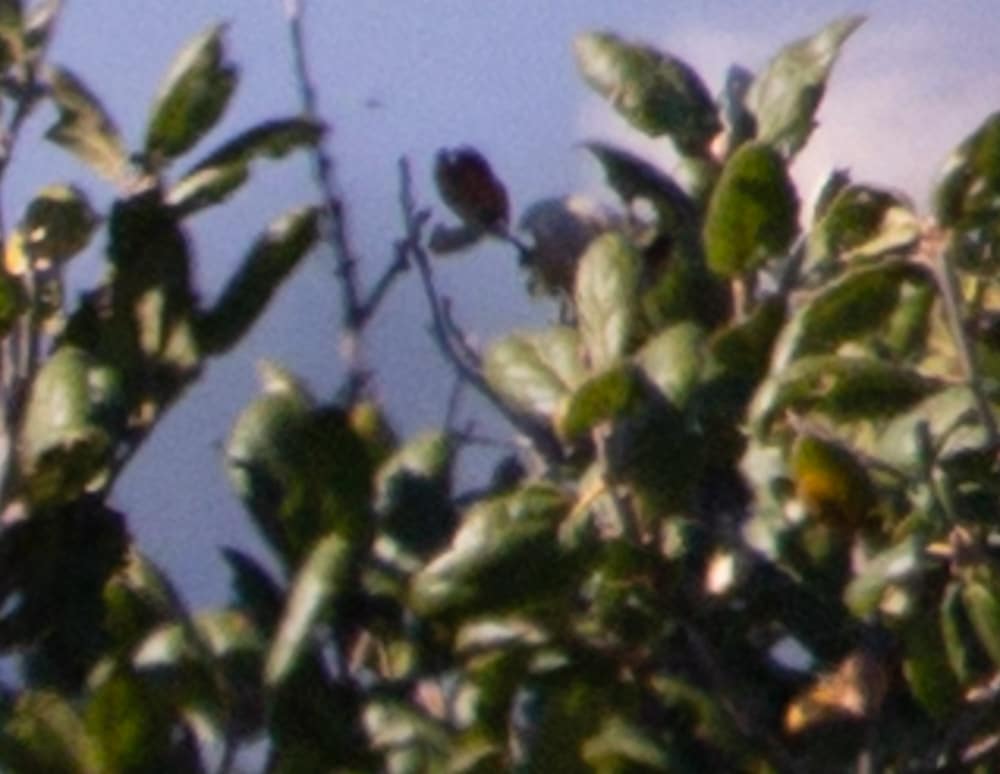

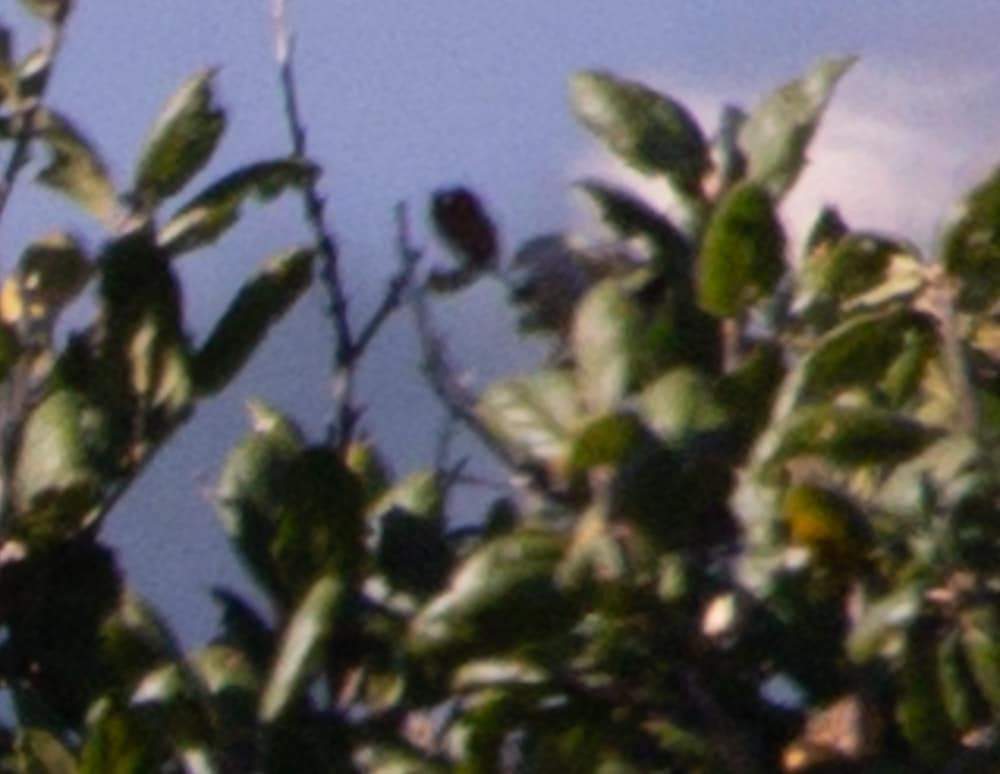
Both lenses appear to be free of purple fringing and lateral chromatic aberration.
Leave a Reply